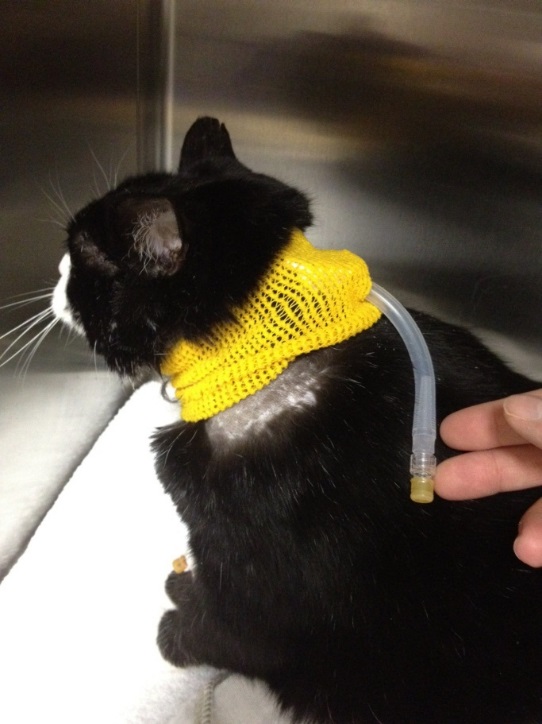For a nasogastric tube the cost of sedation plus tube placement and check radiograph could be 250 370.
Esophageal feeding tube cat placement.
Your cat has just had a feeding tube placed in the side of their neck.
The more complex procedure of placing an esophageal tube involves full anesthesia and could range up to 800.
A curved hemostat kelly or carmalt should be introduced per os into the proximal esophagus.
Placement of the tube through this incision allows food to enter the esophagus and then flow down into the stomach.
For cats a red rubber or silicone tube can be used ranging from 10 14 french.
The cost of a feeding tube is rarely charged in isolation because it s usually placed as a result of trauma or sickness.
Benefits include minimal cost.
And rapid easy placement especially in cats and smaller dogs see benefits disad vantages of esophagostomy tubes.
Esophageal feeding tubes are commonly used to provide enteral nutrition to cats but their use is associated with adverse effects.
An esophageal feeding tube e tube is a small rubber tube that is surgically placed on the left side of the neck extending the length of the esophagus and terminating just before entering the stomach.
Naso gastric tubes are the simplest to insert and are the most common form of tube feeding in cats.
For cats a red rubber or silicone tube is used ranging from 10 14 french.
Esophagostomy tubes are well toler ated and do not interfere.
This tube goes directly into their esophagus to facilitate feeding and giving medications until your cat feels well enough to start eating on their own.
The feeding tube is marked to length from the site of placement to the 7 8 th intercostal space a curved hemostat kelly or carmalt is introduced per os into the proximal esophagus.
Surgical placement of an esophagostomy feeding tube e tube in a cat.
A local anesthetic will be applied to the sensitive lining of the nostrils and then a narrow flexible tube is inserted into the nostril.
Feeding tube dismissal.

